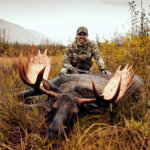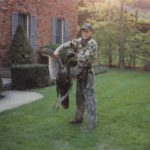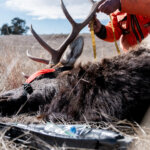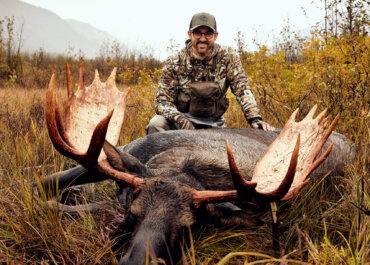Why should you hunt elk late in the rifle season? WTA Consultant Jordan Christensen has some reasons why and how you should tackle the late season rifle elk hunts.
1. Why these are great
Late season rifle elk hunts often get overlooked, and whether you are building points in the western states or you are planning to purchase a late season hunt with an outfitter, these are simply great options. The drawing odds in many of the western states for these November elk hunts can be twice as good as the same hunt that happens in September and October. What this means is you can be in a unit that consistently produces 350+ B&C bulls, with a rifle, in half or less years than it would take to hunt the same unit earlier in the year. It seems everyone wants to chase these bulls when the rut is full tilt. Believe me, I get it, there is nothing more exciting than a giant bull bugling in the timber. These late rifle hunts on the other hand are well past the rut and the style of hunting is completely different. If you are a hunter who loves to glass, then these hunts are for you. The biggest difference from chasing bugling bulls in September is often just that you are just chasing a bugle through the trees and at the last second you have to choose whether it’s the right bull or not. These late rifle hunts give you the time and the conditions to pick and choose the bull you are after and when you leave your glassing spot it’s because you have located a bull you are interested in taking.
2. Use your optics
The conditions for glassing will not get any better for the year than these late season hunts. As the leaves begin to fall off of the aspen and oak trees, the wall of vegetation seems to disappear and quality optics will allow you to glass much more country than any other time of year. The elk don’t need to be standing in an open flat anymore and are easily seen in these pockets of timber. Often times these hunts have some level of snow involved and once again this plays right into your plan. A good friend once told me, “It’s supposed to snow tonight, those bulls are going to look like flies in a bowl of milk.” He was right, pretty tough for something so bright and yellow to not stand out on a snow covered ridge.
3. Get off of the roads
One thing about these late rifle elk hunts that should be mentioned is often the states issue more permits on these hunts; this means you are going to have some company. Because of the conditions, often times with a little effort and planning it won’t take much to distance yourself from the crowds and get into some of the more remote areas of the unit. The mature bulls often gravitate to these areas as well as tend to like the deeper darker canyons to ride out the winter.
4. Be Patient
Because the bulls are no longer making any noise, these hunts often can start out frustrating, sometimes its because all you are seeing is large herds of cow elk and younger bulls and it seems that there are no mature bulls in the area. Touching back to the third tip, these bigger bulls tend to move off by themselves this time of year and more often than not you won’t be finding them where the majority of the elk are located. Stay patient and keep searching, once you locate the right canyon or drainage that the bigger bulls have drifted into you can almost bet that there will be multiple bulls and they are not going to be leaving unless the pressure pushes them out. Plan accordingly and when you make your final movement to get into position for a shot make it count and if the conditions are not perfect then wait for another day to get into a better position.
5. Cover Ground
On the same notes as tip 3 and 4, cover as much ground as possible. These hunts can feel a little like looking for a needle in a haystack, so this could mean lots of miles in the truck as well as lots of miles on your boots and definitely plenty of time behind your glass. If you are in a unit that consistently produces the caliber of bulls you are looking for they are still there, you just have to search them out. Use resources like google earth and scout look to plan all the different canyons and drainages you are going to hunt and then move from location to location even if it’s across the unit to check each of these areas off of your list. Eventually you will end up in the right locations and you will find where the big bulls have concentrated.










